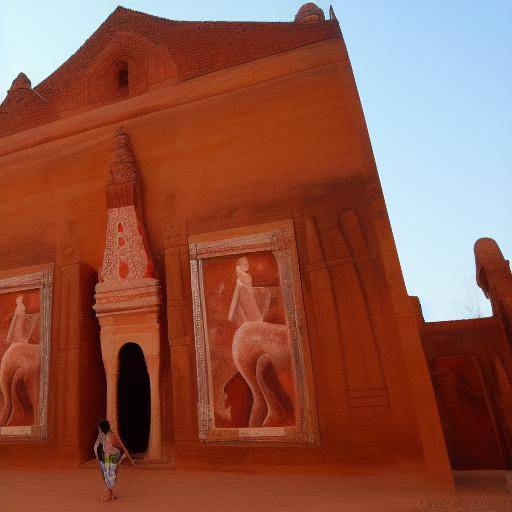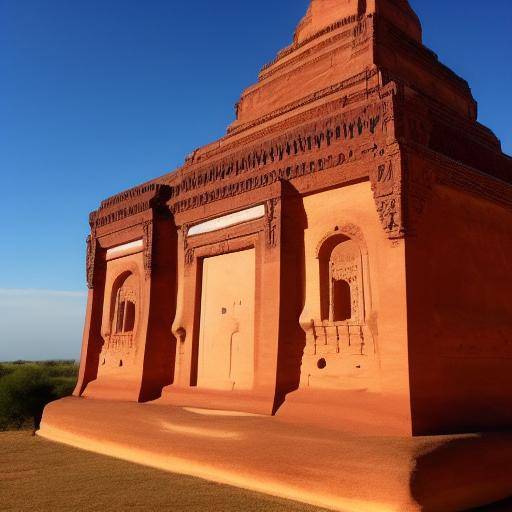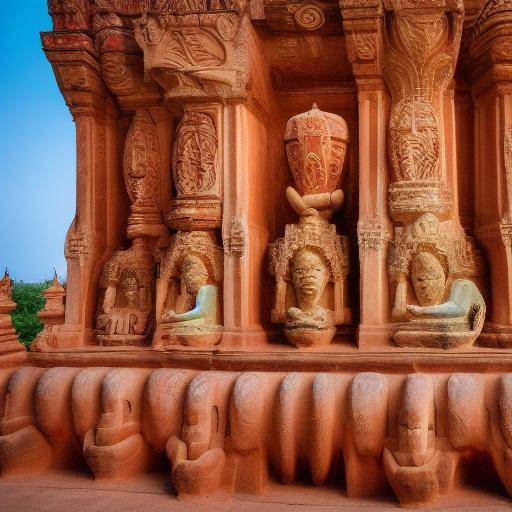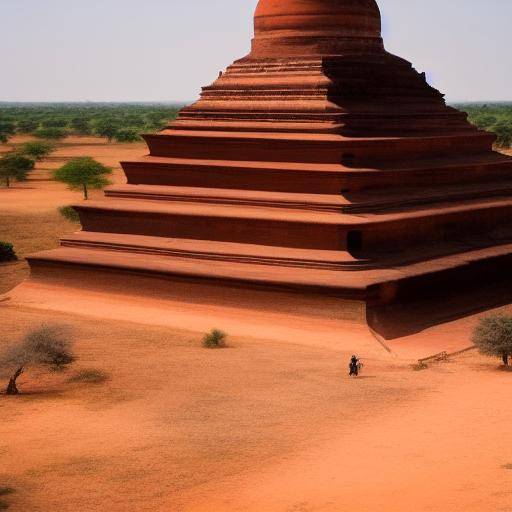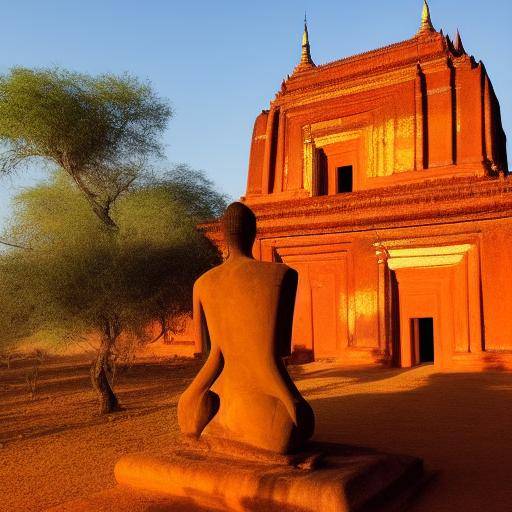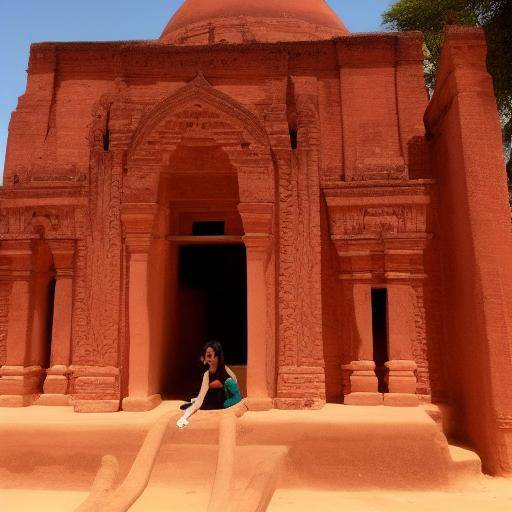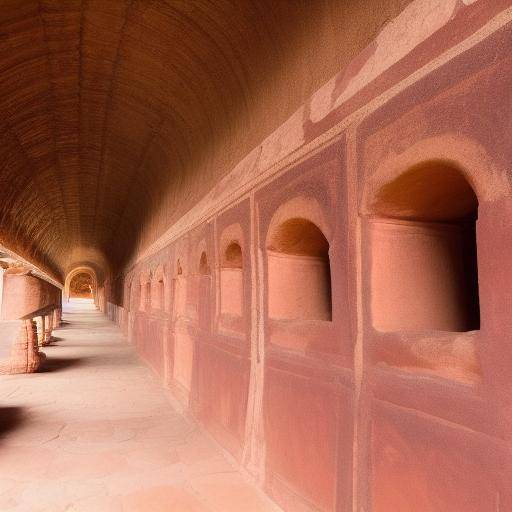
Bagan, located in the heart of Myanmar, is home to an extensive plain adorned by thousands of temples, statues and pagodas. These structures witness the rich cultural and historical heritage of the region, where Burmese mythology and Buddhist philosophy converge. In this article, we will explore the cultural lessons found in the temples of Bagan, from mythology and art to the philosophy of Buddhism. We will discover the Buddhist education rooted in these monuments, as well as the influence of Burmese mythology on its architecture and symbolism. Through an enriching journey through this land of wonders, we will immerse ourselves in the teachings that these temples offer, unraveling their meaning in the historical and contemporary context of Myanmar.
Introduction
The Bagan region, known as the "Earth of Pagodas", is a place of profound cultural and historical importance in Myanmar. The temples scattered on this plain have resisted the passage of time, preserving the essence of Buddhist education and Burmese mythology. In this article, we will explore the fascinating intersection between these two spheres, revealing the richness of meanings that Bagan temples contain. From mythology represented in its reliefs to the influence of Buddhism in the daily life of its inhabitants, we will enter into a journey in which art, history and spirituality intertwine in a unique way.
History and Background
The history of Bagan dates back to the 9th century, when the Pagan dynasty established its capital in this region. The apogee of building temples was given between the 11th and 13th centuries, leaving an architectural legacy without parallel in Southeast Asia. The architecture of the temples of Bagan reveals the influence of Burmese mythology, with representations of mythical beings and deities present in reliefs and statues. These representations offer a unique vision of the worldview of Burmese culture, where mythology is intertwined with everyday life and spiritual beliefs.
Deep analysis
As we enter Burmese mythology incarnated in the temples of Bagan, we find legendary figures that intertwine with Buddhist tradition. The stone carved reliefs show scenes of Buddha's life and other spiritual figures, connecting the mythological narrative to the core values of Buddhism. This integration of myths and religion offers a profound perspective on the cosmovision of Burmese culture and its relationship with Buddhism, enriching our understanding of these traditions rooted in the region.
Comprehensive review
The influence of Buddhist education in the temples of Bagan is undeniable. These monuments serve as spaces of learning and reflection, where the faithful and visitors can immerse themselves in Buddhist philosophy through artistic representations, sacred writings and devotional practices. This education transcends the barriers of time, connecting present generations with a spiritual heritage that has endured for centuries.
Comparative analysis
The comparison between Burmese mythology and Buddhist education reveals a unique intersection in the temples of Bagan. Both traditions are intertwined in the architecture and symbolism of these monuments, creating a cultural landscape that reflects the deep connection between mythology, art and the philosophy of Buddhism. This interaction offers a holistic perspective on the spiritual traditions of Myanmar, enriching our understanding of its cultural legacy.
Practical Tips and Accessible Recommendations
When visiting the temples of Bagan, it is advisable to explore the mythological and artistic representations that transport us to the heart of Burmese mythology. Buddhist education rooted in these sacred places also offers an opportunity to immerse itself in the teachings of Buddhism, opening a way to understanding the spiritual values that have shaped Burmese society over the centuries. In contemplating these cultural lessons, it is essential to maintain a reverent respect for the sacred meaning that these places have for the local inhabitants.
Conclusions and FAQs
Conclusions
The temples of Bagan offer a unique window to the mythology, art and philosophy of Buddhism in Myanmar. From mythical representations to the spiritual teachings permeated in their architecture, these monuments contain deep cultural lessons that transcend time and space. By exploring the intersection between Burmese mythology and Buddhist education in this context, we discover the wealth of a cultural heritage that has endured over the centuries. This journey invites us to reflect on the interconnection between art, mythology and spirituality, providing a more enriching understanding of Myanmar's cultural legacy.
Frequently asked questions
1. What is the importance of Burmese mythology in the temples of Bagan?
Burmese mythology plays a crucial role in the architecture and symbolism of the temples of Bagan, providing a narrative framework that enriches the understanding of Myanmar's cultural worldview.
2. How is Buddhist education reflected in the temples of Bagan?
Buddhist education is manifested through artistic representations, sacred scriptures and devotional practices present in the temples of Bagan, providing an opportunity to immerse in the teachings of Buddhism.
3. What cultural lessons can be found in the temples of Bagan?
The temples of Bagan offer deep cultural lessons on the mythology, art and philosophy of Buddhism, enriching the understanding of Myanmar's spiritual heritage.
4. How does Burmese mythology affect the daily lives of the inhabitants of Myanmar?
Burmese mythology permeates various aspects of daily life in Myanmar, from ceremonial practices to religious festivals, contributing to the social and spiritual cohesion of society.
5. What is the contemporary relevance of Bagan temples in Burmese culture?
The temples of Bagan remain centers of devotion, reflection and spiritual tourism in Myanmar, maintaining their importance as sacred places and living testimonies of the country's cultural heritage.
6. How can I experience the cultural lessons of Bagan temples in a respectful and conscious way?
When visiting the temples of Bagan, it is essential to show reverent respect for the sacred meaning of these places, observing local practices and maintaining a reflective attitude towards the cultural teachings they offer.
We conclude our exploration of cultural lessons in the temples of Bagan, which invite us to immerse ourselves in the mythology, art and philosophy of Buddhism in the unique context of Myanmar. These monuments testify to the rich spiritual and cultural heritage of the region, offering a window to a world of meaning and inspiration. In understanding the profound interconnection between mythology, Buddhist education and everyday life in Myanmar, we embrace the opportunity to enrich our understanding of the cultural legacy that persists in the "War of Pagodas".





